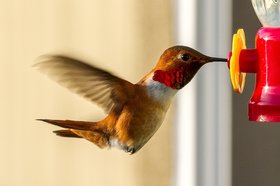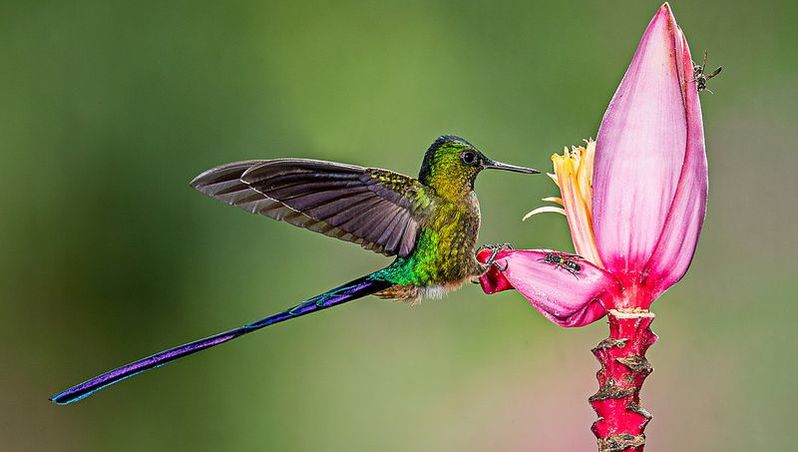The Intro
Ever since I was a little boy I marveled at the aerial speed of hummingbirds as well as the ability to hover for so long. I used to read, in my animal fact books, about how they were the only bird to be able to fly backwards and how the bee hummingbird was the smallest bird in the world and how it could fit entirely in the eyeball of the largest bird in the world. It wasn't until I started watching birds close up that I realized the beauty of the iridescent jewels. I now love to have hummingbirds in the yard and am always interested in knowing more about what would attract them. Obviously, flowers and feeders, but not just any flower will do. We are going to explore some flowering plants, feeders and more which you can add to your outdoor space to increase the chance of having the little flying powerhouses visit you.
The Fake Flower

Hummingbirds will take nectar from just about any port in a flower. This makes it very simple to hang a feeder alongside your porch and have the little birds visit. There are a couple items to remember, when setting out a feeder, that are very literally life or death for the hummingbird. The red dyes that are found in the commercial nectars are not good for the health of these guys. The red coloring is used as a marketing gimmick to attract us humans to buy more of the hummer juice. In reality, sugar water is all you need and is made with a 4:1 mixture of water to sugar. This is exactly the same formula as most store-bought elixirs. They do sell clear nectar now which is perfectly fine to feed your guests. The other part of the equation here is, the feeder that the birds are attracted to. The most common are the four-flower, upside down bottle versions, which work very well. Don’t forget to look for a feeder with a moat so that ants are somewhat deterred. Try not to use the yellow cages or flowers like shown in the picture, it only makes a wasp problem worse. Yellow is an attractant for these bothersome freeloaders. It is always nice to have a perch as well, as it gives the bird some rest while restoring energy. Be sure to clean your feeder regularly as a neglected feeder may grow unwanted bacteria and harm the birds. Cleaning should happen twice a week in the warmer weather. See more on Hummingbird Feeders here. Feeders are a great way to keep track of which birds are visiting your yards and gardens. There are 5 common types of Hummingbirds in The United States and Canada and several places in the south have several more. Don't forget to keep a list on eBird!
